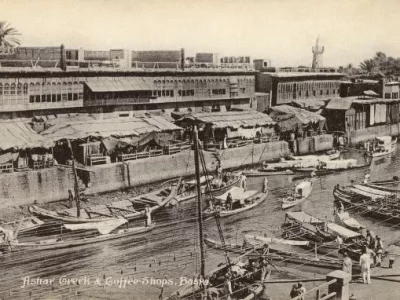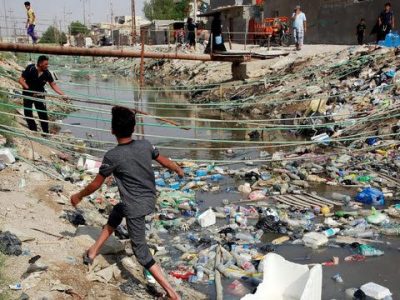Letters Between Friends: Part One
Writing This Arab Life was the first time I sat down to make prose of my emotions.
And only when I finished the manuscript did it occur to me that it revealed itself through juxtapositions, the most poignant among them that of Amman and Beirut; the first my home since I was a baby, the latter my birthplace. Two Levantine cities that once evoked hopeful possibilities but now suggest the kind full of trepidations and dread.
I say dread because both, on the tail end of 60 years of body blows, some self-inflicted, others delivered by forces over which neither had any control, heave and limp in a new century that seems rather vengeful towards the fragile legacies that came before it.
The case of Amman and Beirut is that of the entire Levant and the Fertile Crescent that permeates it, an arc that, in ancient times, went all the way from southern Iran to Cairo and its Nile. Once a lush landscape that signaled the beginning of civilization, now a heartbreakingly parched one warning of dire tidings. I speak of home, but such is the predicament, alas, of every Middle Eastern state that has the misfortune of being exceptionally vulnerable to climate change and is unusually poor in resources or good governance. Witness Iraq’s Basra, as the saddest example.


I write these words on a Friday, which may explain the mood of the text. It could also be the autumn that has yet to separate the leaves from their trees, gently release first rain, and usher in the cold breeze.
But, thankfully, I have a letter in hand. It’s nudging me, as with all letters from my best friend Joye Vailes Shepperd, to turn a story every which way before wrapping it with a final thought or feeling.
A while back, Joye, former Senior Features Editor at the Washington Independent Review of Books and an author herself, wrote to me about Beirut, Amman, and Cairo. She wrote to me because she reads about my world and has visited multiple times. She knows my cities, has friends in them, stays in houses she can with ease call abodes.
She opens with this rendition:
My mother used to cry at beauty. The first time I remember it happening in my presence was on a road trip, traveling through a tunnel of trees. From the passenger seat, I watched her look up and let her tears fall. I think I was all of ten. She often pointed out some simple beautiful thing with wet eyes. But that first time, the lesson granted to me was that the places we inhabit, inhabit us back and too, she gave me, by example, the permission to feel beauty, to know that it was okay to honor it with tears, smiles or in any way one chooses.
Before Joye’s letter, I wouldn’t have thought that, for a foreigner, Beirut would be all about its women: “…they are a most extraordinary group. Those who stayed, those who returned after the Civil War. They are marked by the scarred terrain of their surroundings which in turn mimics itself onto the emotional terrain of their psyches.” She continues:
Yes, cities do reflect the people who live within. It’s a funny mirror, a more exacting image than meets the eye. My friends make art of woe, know not to waste their time on ugliness. Instead, they walk along the waterfront without dismay. They prefer the old souks instead of gleaming fakery. Still regard the cedars with delight. Look upon each other for arguments.
I live in Clemenceau, one of Beirut’s old neighborhoods. It’s a quiet one, especially as dusk drops. On certain streets, it’s interesting and rather pretty, on others gray and nondescript. Facing me are two very dear friends who happen to be married to each other. They live in “a yellow building across the street,” that to Joye “looked as if it were built around the trees that seemed to rise up out of its middle.”
“The incongruency of the architectural landscape might seem a little strange to some, “ she adds .” Yet, what a good yield if the incongruency in the landscape could be reflected in the politics of the region.”
Of the old Amman that has all but vanished, Joye’s impressions of places and people that are long gone are the ones I always want to summon. “I remember the first night when your father took us to dinner in the garden of a restaurant, The Flying Carpet! He asked me if I’d ever had humus before, took my bread, dipped a big chunk and gave it to me to taste. I immediately took as large a swig of Coca Cola as I could. Never had I eaten anything so strange.”
When she came to Jordan for the first time, she was 18 years old, and I was 16. We knew little about this world, but she knew enough to love the country in ways few strangers could.
In a quiet village on the way to Petra, I knew exactly what awaited around the corner. I had seen the old man in his kaffiyeh sweeping dust over dust before I’d ever arrived in Jordan. Something about the scene was so disquieting that it has stayed with me. Like yesterday. At the time, I reregistered the fact that I must be prescient. That’s how I knew what was around the corner of a place I’d never visited. You chose to believe me. You didn’t have to but did. Maybe something about living in Amman made it easy to believe in impossible things. We rode around in circles on Amman’s hills: Jebel Hussein to Jebel Lweibdeh to Jabal Amman. The circumference of visits to the houses of friends with their ready hospitality was wide, and I remember the family that hung the souvenirs of their travel on the walls of their living rooms. How familiar and how oddly unalike the American families that I knew. We all hung souvenirs on the walls, we’d just been to different places.
There are different kinds of beauty…There is the human kind, which seems to reside in the character of those who possess it. I’m inclined to think that those who truly possess it may have had it rubbed onto them by their surroundings. This is a silly assertion, I’m sure, but I’m standing by it for now.
****
On Another Note
This is part two of Jenine Abboushi’s Sudden Journeys: Israel’s Intimate Separations, It reads like a diary of her journeys through the Occupied Territories. Here’s a peek:
Israeli settlements used to line hilltops around Palestinian towns and villages at a distance, in uniform barracks, encircled by layers of barriers and powerful lights, like prisons. (My friend Samia told of her relative’s child who would not stop asking about these barricades, as well as Israel’s “separation” wall, and her mother explained to her that the Israelis want to imprison themselves.) Now many of these settlements are proper towns, albeit soulless and uniform. But the biggest shock is their close proximity to the Palestinians. The Israelis have swallowed up so much land that they are living smack up next to dense Palestinian towns and villages. The result of Israel encroachment, frenzied and ongoing, firmly defeats its own declared objective of creating a comprehensive “security” separation against the Palestinians. Indeed, it would be hard to challenge Abdaljawad Omar (writer and lecturer at Birzeit University) in his understanding of Zionism as a “neurotic political movement.”
